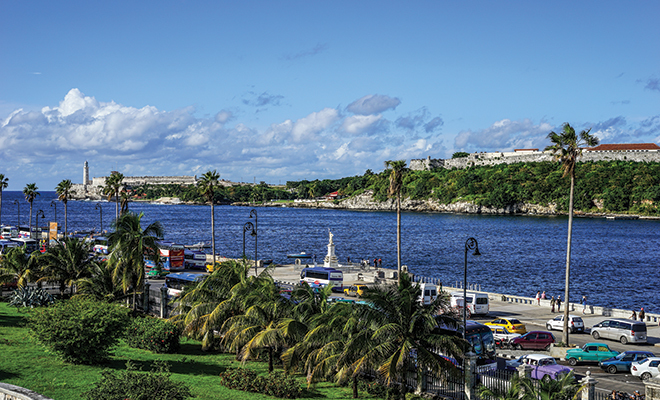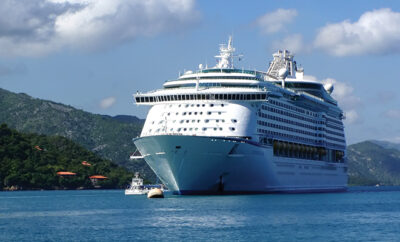
Visiting Cuba again
Beaches unspoiled by tourists, Caribbean-blue waters, warm temperatures and fresh, hearty and flavorful foods–for more than half a century, Cuba has been a mystery to most Americans. It has been the forbidden island, its doors locked from the outside, the United States government restricting our access to this tropical playground.
Since the relationship between Cuba and America was restored in December 2014, travel restrictions have been gradually easing and Americans are finding travel into Cuba more accessible. While tourism is technically not allowed, Americans have been given permission to enter Cuba as long as they are traveling under an umbrella of “purposeful travel” conditions that fall under one of 12 categories of authorized trips. These include professional research and professional meetings; educational activities; religious activities; public performances, clinics, workshops, athletic and other competitions and exhibitions; support for the Cuban people; and humanitarian projects. Such “purposeful travel” now requires only a “general license,” which actually means there is no need to apply for a license at all.
At the beginning of this year, the United States and Cuba signed an agreement allowing airline service between the two countries for the first time in more than 50 years, sparking a flurry of activity by airlines waiting to jump on board. What that means is that airlines will be allowed to directly sell tickets for flights to Cuba. Previously, all flights bound for Cuba were chartered by tour companies.
Cuba is seeing the benefits. Last year, more than 138,000 Americans traveled to Cuba, a 71 percent increase from the previous year. In March, President Obama became the first American leader to visit Cuba in this post-Cold War era, the first since President Calvin Coolidge visited in 1928. Recently, President Obama loosened travel restrictions even further, and while it’s still not considered tourism, this will allow Americans to travel the country independently as long as they complete a form declaring the visit as educational.
So what does all of this mean for travelers hoping to demystify this newly unlocked country? Primarily, travelers will no longer have to sneak into Cuba through other countries; also, travel will become much less expensive. Instead of booking with tour companies, Americans will be allowed to jump on a plane legally and explore the very same land Christopher Columbus first enjoyed so many centuries ago.
Before you leave the airport, be sure to secure your travel visa. The current cost is $25. This is when you’ll need to complete the form declaring the purpose of your trip.
Once you land in Cuba, you will need to pay a 10 percent tax imposed by the Cuban government to exchange your American dollars for CUC pesos, with a 1:1 exchange rate. Additionally, many providers tack on a 3 percent service charge. Don’t count on your credit cards to work here, as many businesses, especially those outside Havana, don’t yet have the infrastructure to accept this form of payment. You will be smart to be prepared with extra cash.
Because tourism was restricted for so many years, travelers won’t find a wide selection of hotels or fancy resorts in Cuba. While this will most likely now begin to change, your best bet is still to find a bed and breakfast, known here as a “casa particular” and best reserved in person.
Shopping in Cuba is quite limited, as the effects of the embargo have not yet waned. Pack wisely, as you may not be able to find the toothbrush, deodorant and shaving cream typically stocked in most convenience stores that you can find when traveling abroad elsewhere.
Don’t expect the same level of technology we enjoy in the United States. Cell phone service may be difficult. At the time of this article’s writing, Sprint and Verizon are the only carriers with roaming capability in Cuba. Internet access is also very limited, although Google did just announce a plan to install high-speed internet access in Cuba.
What you will find are breathtaking beaches and scenery and some of the Caribbean’s most enchanting sailing areas. You may enjoy spectacular diving in an underwater fantasy world, deemed noteworthy by Jacques Cousteau in his film Cuba, Waters of Destiny. History buffs will find a fascinating, rich history; nature lovers will be attracted to many well-preserved ecological wonders including lush tropical forests where rare orchids grow. The rugged mountain region of Holguin was reportedly pronounced “the most beautiful land eyes have ever seen” by Christopher Columbus when he first sighted it in 1492. Of course, don’t miss a stop by Havana, the exotic capital of Cuba and largest city in the Caribbean.
The U.S. government has relinquished the keys to this gorgeous country; what you do with them now is entirely up to you. HLM
Sources: cntraveler.com, gocuba.ca, havana.usembassy.gov, huffingtonpost.com, newyorktimes.com, qz.com, travelandleisure.com and washingtonpost.com.







